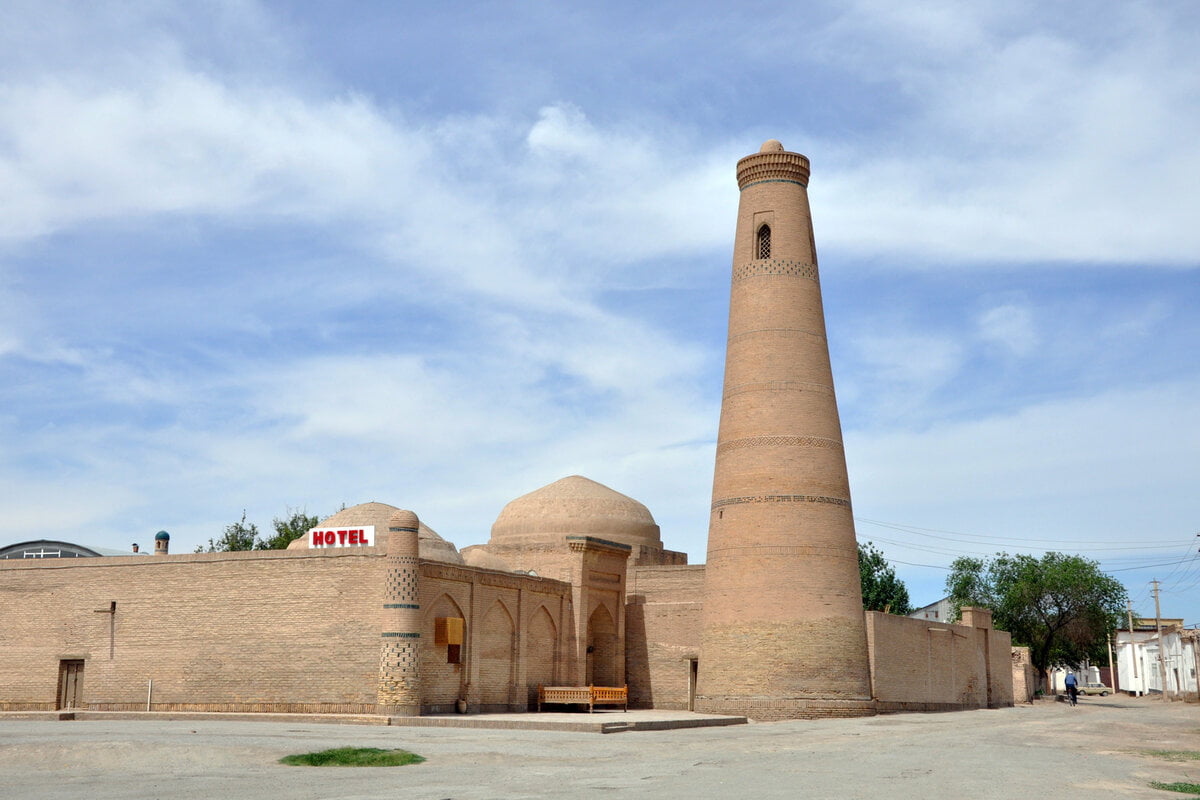Khiva - Sheikh Qalandar Bobo Mausoleum
The mausoleum of Sheikh Qalandar Bobo was built in the 16th century, is located southwest of the Bikanjan Bika Madrasah and was built in the centre of the cemetery of the same name, which belongs to the Dishan Qala settlement in Khiva.
According to legend, Sheikh Qalandar Bobo was a Sufi sheikh who came to Khiva with his two Darvish brothers. The mausoleum has a single-domed portal and a tomb; it was restored in 1997.

Khiva is the city of legends, mysterious stories and myths. Many great names and semi-mythical personalities lived, studied and created in this land. They have remained in people’s memory through their deeds and actions and became an inseparable part of the region’s history.
Sheikh Qalandar Bobo was one of these famous personalities of Khorezm. According to legend, he was a Sufi sheikh who travelled a lot and visited many countries. In the end, he settled in Khiva, where he taught the principles of Sufism and strengthened the faith in Islam. Sheikh Qalandar Bobo was known for his modesty, ascetic lifestyle and together with his two brothers helped the needy. After his death, the Sheikh was buried in the cemetery near the Bikanjan Bika Madrasah, and at the end of the 19th century, a memorial complex was built here: a madrasah with a minaret. The buildings are not distinguished by any particular style, design or decoration, as in principle befits the burial place of a representative of Sufism.
The mausoleum in Khiva, where Sheikh Qalandar Bobo is buried, dates from the 16th century. At one time, the mausoleum was quite large and contained several tombs. According to medieval tradition, a madrasah and a minaret were built nearby in the 19th century. Of the mausoleum itself, however, the domed structure with a portal, the later madrasah and the minaret remain. The minaret is eighteen metres high and six metres in diameter at the base. The madrasah itself is small and in the courtyard there are cells where students and teachers lived. When visiting the classrooms, one can understand how lessons were conducted and what was used for them. After the last reconstruction in 1997, the complex is open to receive visitors.
